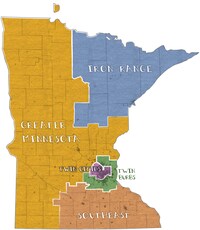
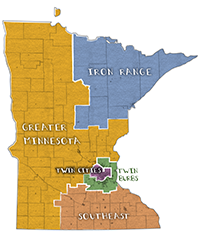
Sixth in a series on swing states
For Republicans, Minnesota has long been the one that got away. Ronald Reagan came 3,761 votes away from carrying it in 1984, with Walter Mondale’s hometown advantage probably costing him a 50-state sweep. Sixteen years later, with Ralph Nader peeling votes away from Al Gore, George W. Bush came within three points of winning the state.
Republicans didn’t get so close again until 2016, when Donald Trump lost Minnesota by 44,593 votes. And it has rankled Trump ever since. “We came this close from winning this,” Trump said during a 2018 visit to Duluth, a frustrated take he’d deliver again and again, arguing that a little more campaigning would have flipped the state. “One more speech — oh, one more speech.”
Trump’s party has acted on that analysis, investing the same sort of ground game and ad resources in Minnesota that it has in places like Michigan, Pennsylvania and Wisconsin. That’s a shift from 2016, when both parties were surprised by what Trump’s ad hoc effort almost pulled off. But Democrats have engaged more seriously, too, coaxing Joe Biden into a visit this week, when early voting begins.
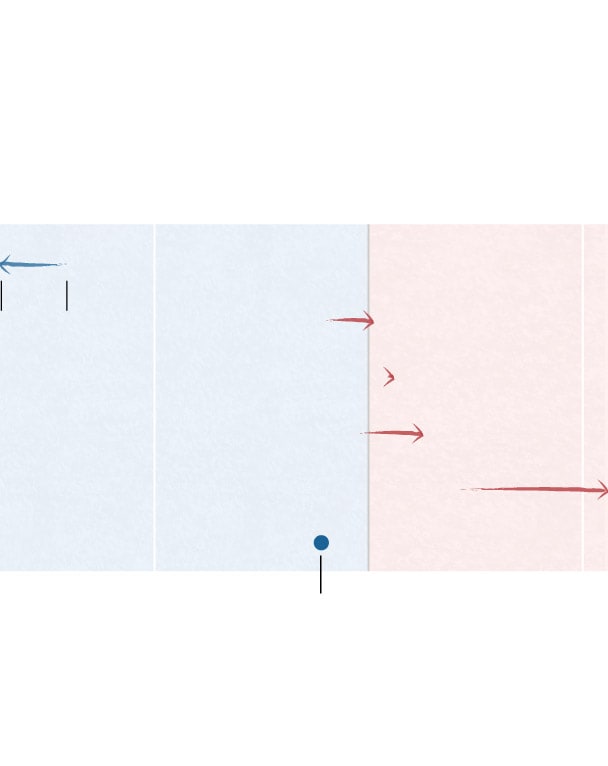
Minn.’s swing from 2012 to 2016
Clinton added votes in the Twin Cities, enough to stave off Trump’s gains everywhere else.
Dem. won by
200K votes
GOP won
by 200K
Twin Cities
Iron Range
Twin Suburbs
Southeast
Greater Minn.
Statewide 2016 margin
In 2018, Democrats improved enough in the Iron Range and the Twin Burbs that a GOP win was impossible.
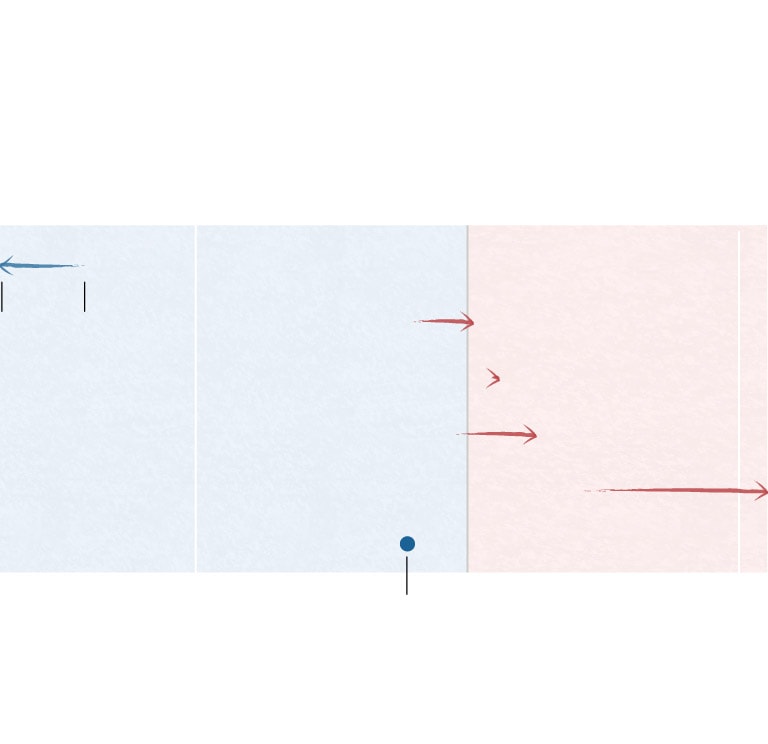
How Minnesota swung from 2012 to 2016
Clinton added votes in the Twin Cities, enough to stave off Trump’s gains in the rest of the state.
Dem. won by
200K votes
GOP won
by 200K
Twin Cities
Iron Range
2016
margin
Twin Suburbs
Southeast
Greater Minn.
Statewide 2016 margin
In 2018, Democrats improved enough in the Iron Range and the Twin Burbs that a GOP win was impossible.
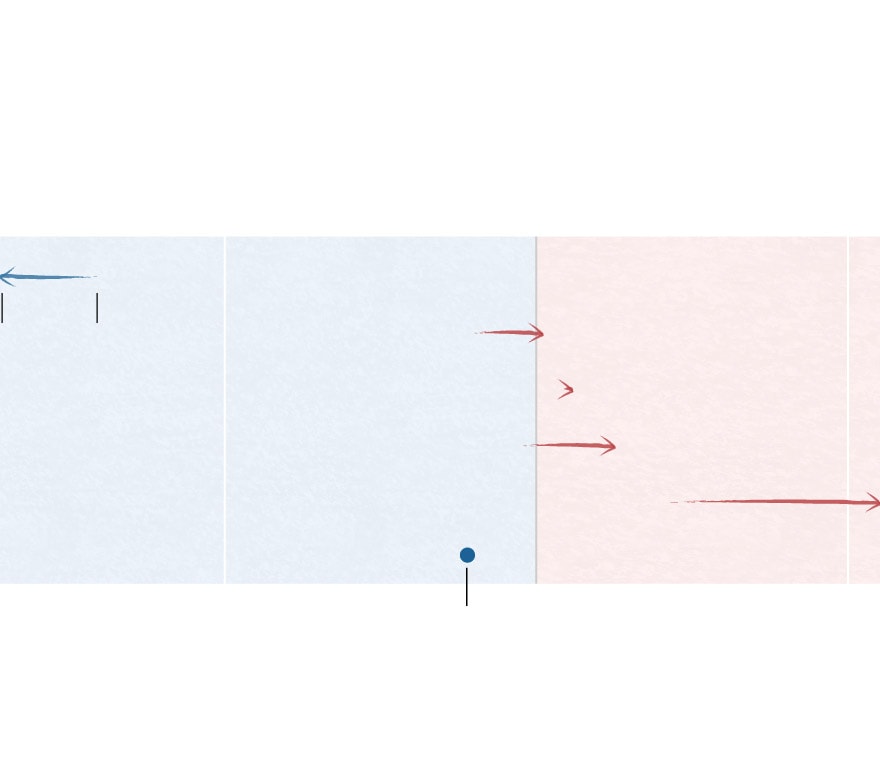
How Minnesota swung from 2012 to 2016
Clinton added votes in the Twin Cities, enough to stave off Trump’s gains in the rest of the state.
Dem. won by
200K votes
GOP won
by 200K
Twin Cities
Iron Range
2016
margin
2012
margin
Twin Suburbs
Southeast
Greater Minn.
Statewide 2016 margin
In 2018, Democrats improved enough in the Iron Range and the Twin Burbs that a GOP win was impossible.
No poll has found Trump ahead in Minnesota, but polling underestimated his 2016 support, and Republicans contend he has held or gained ground since then. As in the rest of the Midwest, Trump struggled in cities but won vast numbers of rural White voters — and in Minnesota, that cut right through the coalition that had elected Democrats for decades. Rural towns that had elected only Democratic mayors or legislators swung to Trump, and even though Democrats swept 2018’s statewide races, some of those voters stayed swung.
“The Democrats have left them behind,” said Jennifer Carnahan, the chair of Minnesota’s GOP. “They call themselves the Democratic-Farmer-Labor Party, but they’ve completely lost the farmers and members of labor unions. They’re against mining. They’re against job creation. They’re against a pipeline up in northeastern Minnesota on the Iron Range. They don’t stand with those folks anymore.”
Democrats have lost ground with some of their traditional Minnesota voters, but the 2018 election revealed the limits of the GOP’s gains. Trump had won just 45 percent of the vote in 2016 and got close to Clinton in part because 9 percent of voters backed a third-party candidate. (Just two other states saw a higher percentage of third-party votes, Alaska and New Mexico.) In 2018, no Republican running statewide got more than 45 percent of the vote, and Democrats improved their numbers in the Iron Range and Southeast Minnesota, carrying outer suburbs of the Twin Cities at levels that made a Republican win impossible.
This map divides Minnesota into five political “states.” Just one, the Twin Cities, got more Democratic in 2016. Another, the suburbs and exurbs of those cities, changed little between 2012 and 2016 but swung left in 2018. Two regions flipped from Barack Obama in 2012 to Trump in 2016 — the counties from the Iron Range over to Duluth and Lake Superior, and a corner of Southeast Minnesota. And the rest of the state, the Greater Minnesota that stretches from Iowa to Canada, moved dramatically toward the GOP.
This is the sixth in a series breaking down the key swing states of 2020, showing how electoral trends played out over the past few years and where the shift in votes really mattered.
Twin Cities
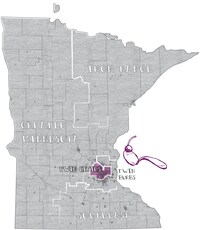
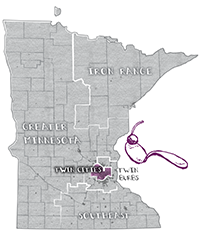
Minneapolis saved Hillary Clinton’s campaign in Minnesota. The biggest and bluest city in the state, it had been getting more Democratic for years, but Keith Ellison — then the city’s congressman, now the state’s attorney general — put special emphasis on turning out the vote. The result, a 148,892-vote landslide in Minneapolis, was the biggest for any Democratic candidate ever, and it put Clinton over the top statewide.
Minneapolis and St. Paul now make up the core of the Democratic vote, and their surrounding counties, Hennepin and Ramsey, pad the total. Clinton carried every town in Ramsey and flipped several Hennepin towns that Obama had lost; two years later, places like Eden Prairie were crucial to the successful Democratic effort to flip the House. When the Democratic-Farmer-Labor (DFL) Party went all-in this year to support Rep. Ilhan Omar in her August primary, it was explicitly because of her ability to drive turnout in the city.
2016 vote totals
- Donald Trump: 262,771
- Hillary Clinton: 606,881
Counties included: Hennepin, Ramsey
Twin Burbs
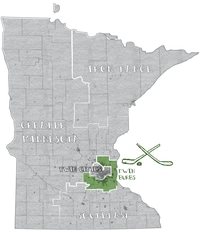
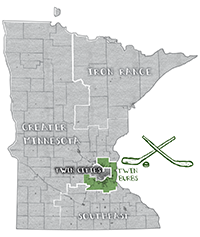
The exurbs of Minneapolis and St. Paul did not see the same vote shifts as the rest of the state. From 2012 to 2016, the GOP margin in the region rose by just 5,415 votes, and a lot of that had to do with the vote for third-party candidates — that number grew by 47,880, as the raw Republican vote fell by 16,926. Minnesota was one of 11 states where independent conservative Evan McMullin made the ballot that year, and he got 2 percent of the vote here while the Libertarian candidate cleared 4 percent. Republicans view those voters as gettable for Trump. Democrats aren’t convinced.
“These have been Republican areas for years, but they’ve trended Democratic in recent cycles,” DFL chair Ken Martin said. “You’ve got Fortune 500 executives, in wealthy neighborhoods, who are not comfortable with Trump.”
Democrats, who are trying to flip the GOP-controlled state senate this cycle, are hoping to build on some of their exurban gains from the midterms. Democratic Gov. Tim Walz carried three of the region’s five counties; Sen. Amy Klobuchar, whose appeal to Republicans was central to her presidential campaign, carried them all. With Klobuchar’s endorsement, Biden demolished the competition here in the 2020 primary, which Democrats saw as a clue that he could win some Republicans who’ve grown uncomfortable with the party in the Trump era.
2016 vote totals
- Donald Trump: 326,644
- Hillary Clinton: 303,094
Counties included: Anoka, Carver, Dakota, Scott, Washington
Iron Range
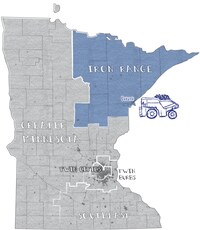
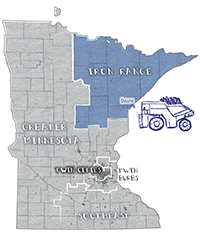
For decades, the small mining towns of northeastern Minnesota were strongholds of unionized, Democratic votes — vastly outvoted by the Twin Cities but crucial for the party’s statewide win margin and usually represented by the party in Congress. That began to change in 2010, and the floor fell out in 2016, when Trump swept the Iron Range. Republicans picked up the region’s House seat in 2018, and polling has found Biden, who has embraced more rigorous environmental standards than he did when he ran for vice president, losing the Iron Range even when he leads statewide.
There may be more votes for Republicans to pick up here, even in the counties east of the range that stayed blue in 2016. Duluth, which casts almost a quarter of the region’s total vote, broke for the Democratic ticket by 37 points in 2012, then by just 29 points in 2016. The falloff for Democrats in smaller cities was dramatic, and the Republican National Convention highlighted a number of Minnesotans who advanced the party’s case: The pro-green-energy, pro-abortion-rights, pro-gun-control version of the Democratic Party didn’t represent northeastern Minnesota.
2016 vote totals
- Donald Trump: 101,186
- Hillary Clinton: 96,679
Counties included: Aitkin, Carlton, Cook, Crow Wing, Itasca, Koochiching, Lake, St. Louis
Southeast
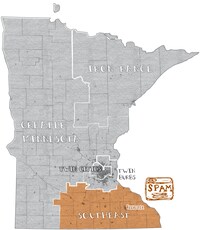
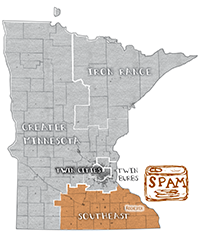
The “driftless area” that covers parts of Iowa, Wisconsin and Minnesota swung hard toward Republicans in 2016. Unlike other rural areas, Democrats in 2018 were able to win much of it back; in Minnesota that was thanks, in part, to gubernatorial candidate Tim Walz winning the 1st Congressional District, which covers the region. Republican Rep. Jim Hagedorn flipped that district by one point, but Trump had won it by 15.
What changed? Clinton lost eight counties that had backed Obama twice and won only around the city of Rochester, where the Mayo Clinic has fostered a population of college-educated White voters. The midterm’s Democrats won many of those people back, as voters in the suburbs of cities like Mankato and Winona broke against Republicans. One reason for their resilience: The region has welcomed thousands of refugees, for decades, and the population of some smaller cities here has been growing as more rural parts of the state have shrunk.
2016 vote totals
- Donald Trump: 199,140
- Hillary Clinton: 148,412
Counties included: Blue Earth, Brown, Dodge, Faribault, Fillmore, Freeborn, Goodhue, Houston, Le Sueur, Martin, Mower, Nicollet, Olmsted, Rice, Sibley, Steele, Wabasha, Waseca, Watonwan, Winona
Greater Minnesota
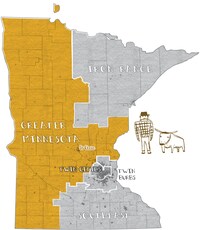
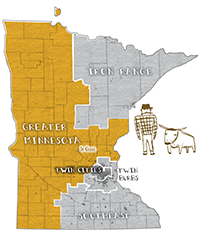
For a little while on election night 2016, some Democrats started to think that Minnesota was lost. Greater Minnesota, a largely rural region bigger than many states, was the reason. Even in 1984, Democrats had held on to towns like Benson and Red Lake, mitigating the GOP’s rural strength. Trump carried every single county in the region, transforming the party’s win margin of nearly 43,000 votes in 2012 to more than 208,000 votes in 2016.
The GOP’s gains in much of the region look secure now; Democrats have tried to drum up rural outrage over Trump’s tariff policies, while Republicans have touted the U.S.-Mexico-Canada Agreement as proof that Trump will act where Democrats talked. (Rep. Collin C. Peterson, one of the GOP’s top targets this cycle, chairs the House Agriculture Committee and backed the trade deal after Democratic revisions.) Trump’s visit to Bemidji this week will take him to one of the places where the flip was especially dramatic — Obama beat Mitt Romney there by 1,079 votes, while Trump beat Clinton there by 119. Margins like that, from small towns to small cities, let Trump close the statewide vote gap — but not overcome it.
2016 vote totals
- Donald Trump: 433,639
- Hillary Clinton: 212,468
Counties included: Becker, Beltrami, Benton, Big Stone, Cass, Chippewa, Chisago, Clay, Clearwater, Cottonwood, Douglas, Grant, Hubbard, Isanti, Jackson, Kanabec, Kandiyohi, Kittson, Lac qui Parle, Lake of the Woods, Lincoln, Lyon, Mahnomen, Marshall, McLeod, Meeker, Mille Lacs, Morrison, Murray, Nobles, Norman, Otter Tail, Pennington, Pine, Pipestone, Polk, Pope, Red Lake, Redwood, Renville, Rock, Roseau, Sherburne, Stearns, Stevens, Swift, Todd, Traverse, Wadena, Wilkin, Wright, Yellow Medicine

